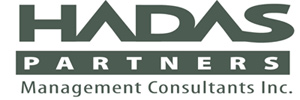There is a science and an art to managing change, and especially when it comes to identifying who can trip you up in a project. This activity, known as a stakeholder analysis or assessment, is the first and most important activity when managing change on a project.
An earlier blog covered what questions you need to ask to identify allies and potential traps. That’s the science. But how you ask those questions, that’s the art.
You see, if the stakeholder assessment is not thorough, your advice on what change management activities to implement will be off. Garbage in, garbage out. You have to get this right.
The blog mentioned above, discussed how we uncovered the IT manager who influenced the CIO. That saved us a lot of time, and may have even saved the project! Here is another example of how a thorough stakeholder assessment saved us from calamity.
The ‘Turncoat’ Sponsor
 This particular executive hired us to help their organization implement their corporate strategy. The company had announced the strategy to centralize their product and service lines, but then for months and months nothing happened. Everyone told us there were some rifts in the senior ranks, but little else.
This particular executive hired us to help their organization implement their corporate strategy. The company had announced the strategy to centralize their product and service lines, but then for months and months nothing happened. Everyone told us there were some rifts in the senior ranks, but little else.
When we started our stakeholder assessment everyone was in agreement with the strategy. Why wasn’t it implemented then? It didn’t make any sense.
We focused on the internal rifts. As we probed, these were categorized as personality clashes. Again, not to do with differences of opinion or vision, just poor chemistry. This should not have prevented the implementation of the strategy either. Another dead end!
One clue in all of this was that the personality clash involved our sponsor. As we dug deeper, we uncovered the evidence and motivation for our sponsor was the roadblock to implementing the corporate strategy.
Because we had done our homework with the stakeholder assessment we were able to put change management activities in place that forced our sponsor’s hand. At this point they turned on us.
So, an executive that hired us and supported us, then tried to fire us when our facts contradicted their objectives. That hurt, and we felt betrayed. Finally, how did it end?
For us, not too badly. The executive team retained us to develop the company-wide implementation plan. We worked closely with senior management to align them around the plan, and positioned a new director to lead the implementation successfully.
For our sponsor, sadly it was a different story. Unfortunately for them, the chief executive was disappointed with their behaviour, and terminated them.
The Art of Assessing Stakeholders
 So how can you similarly accurately identify where the traps for your project could be? That is the million dollar question.
So how can you similarly accurately identify where the traps for your project could be? That is the million dollar question.
Unlike IT and process due diligence, there is rarely any documentation to work from when it comes to people due diligence. A company may have schematics that point to outdated technology. It likely has procedures that can highlight inefficiencies. But there will be nothing documented that alerts you that Tim over there in distribution is impossible to work with.
So, you have to get that information in a different way. You have to ask the key questions: who is impacted, how important are they to the success of the project, and how supportive do they need to be. But then you have to keep probing and asking further. And you have to do it artfully so that you do not arouse suspicion nor turn yourself into a nuisance.
How you ask depends on the mindset you bring to this activity. Here are four ways to think when doing a stakeholder assessment or analysis.
1. Approach – think like a detective
 If you approach this activity like a task that needs to be completed by a particular date, you will miss important clues. This is not a tick box activity. Approach the stakeholder assessment with a mindset that there are valuable clues that are purposely hidden. Your task is to ferret them out.
If you approach this activity like a task that needs to be completed by a particular date, you will miss important clues. This is not a tick box activity. Approach the stakeholder assessment with a mindset that there are valuable clues that are purposely hidden. Your task is to ferret them out.
Every detective tries to identify individuals who want them to succeed. For you, these will become your allies. They will tell you much – identify them and make yourself worthy of their trust. And keep digging.
2. Attitude – have the impatience of an artist
This speaks to the dissatisfaction true artists feel with their work. It’s rarely ‘good enough’ for them. There is always something they could add, take out, or change in order to improve.
If you take the same approach, that there is always something you don’t know, something you haven’t been told, then your antennae will remain tuned in to uncover critical information. Even if you ‘complete’ your stakeholder assessment task, you will always remain open to new discoveries.
It is important to remember that this activity never really ends. Your stakeholder assessment document is a working document, and you need to be prepared to update it at any time. And that means updating any change management activities related to your initial findings.
3. Perception – have the ear of a therapist
You have to be able to hear what the person says, but also tune into what they are not telling you. This is very hard and takes much effort and practice, but anyone can do it. This is the proverbial “reading between the lines”.
The best approach to this is allowing room for silence. It takes time to become comfortable sitting across from a manager and letting both of you not say anything for a few seconds. That’s initially nerve-racking. When you try this the first few times you may want to ensure you are wearing good deodorant.
After the silence someone has to say something. Hopefully this is when the person across from you will feel impelled to reveal something important. If not, you have to be prepared to break the silence. You can do it either with a follow up question, or by saying simply, “thank you for that information”, and then continue with your prepared questions.
4. Values – treat revelations as confidential information
Trust is the grease that will smooth your way to success. How do you build trust? Easy. Keep your mouth closed. If you have to verify information, don’t attribute it to your source (unless, of course, you check with them first).
People will want to tell you things, and they will test you by giving you less sensitive information first. Then they will sit back and see if it somehow comes back to them.
If it does, a door will close. Actually, several doors will close as the word spreads that you cannot be trusted with sensitive information. Your efficacy will diminish drastically, and you have to be prepared for some nasty surprizes.
If it doesn’t come back to them, they will eagerly tell you a little more. In time you will hear their deepest secrets. Within those secrets will be the bread crumbs that will lead you to success.
“There is no glory in practice, but without practice there is no glory” – Unknown
Go ahead and practice using this mindset the next time you are assessing stakeholders. Happy discoveries and success!












